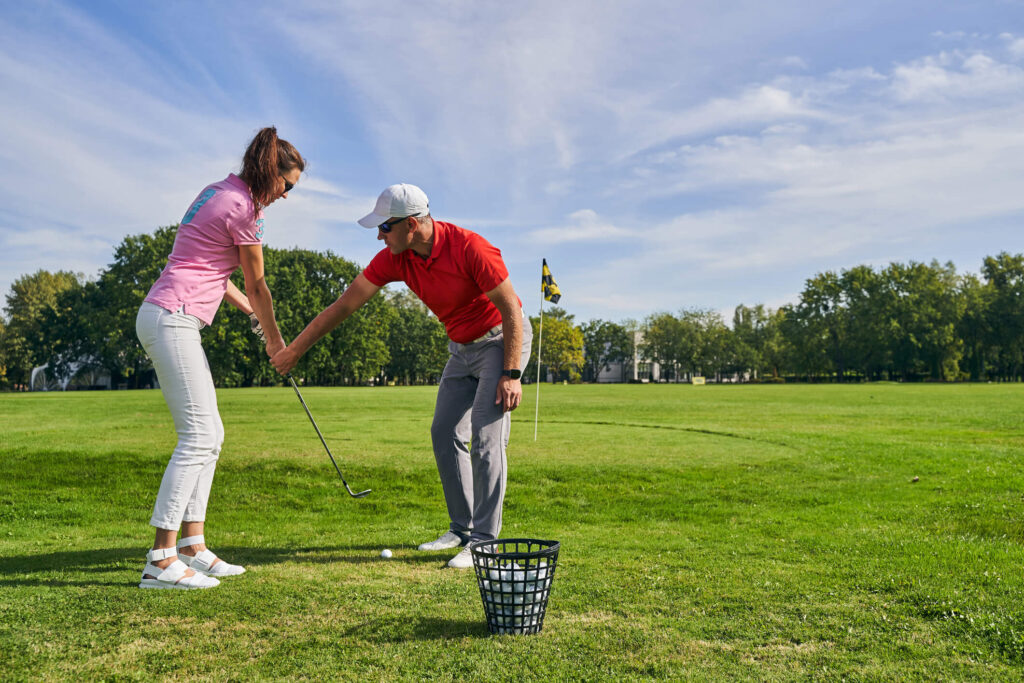A strong short game is the key to lowering your scores, and mastering your chipping technique is a crucial part of that. As fun as the driving range is, your short shot can make or break your game. Whether you’re facing a greenside chip or need to control your ball roll over a shorter distance, the right setup and execution can make all the difference. These essential tips will help you improve your chip shots, achieve a clean strike, and gain more confidence around the greens.

Avoid Common Mistakes
One common mistake a lot of golfers make is trying to help the ball into the air with their right hand. This leads to scooping the ball and inconsistent contact. Instead, focus on keeping your left wrist firm through impact and allow the club head to do the work. A quiet right hand will help promote a cleaner, more controlled strike.
Lower Your Hands on the Grip
By lowering your hands on the golf club, you bring your body closer to the golf ball, promoting a more controlled, straight-back-and-through chipping stroke. This adjustment enhances feel around the greens compared to using a full-length club, which generates a stronger shot with less precision. When lowering your hands, avoid hunching over—simply bend your knees while maintaining your normal posture. A proper grip position will help create better distance control and a softer touch for each chip shot.
Keep Your Stance Narrow and Slightly Open
Many golfers set up parallel to the target line, which can restrict natural rotation through the chipping stroke. Instead, open your stance slightly by dropping your front foot back from the target line. Keep your heels close together, allowing for a steeper angle of attack into the golf ball and promoting a clean strike. This simple adjustment helps deliver solid contact and consistency with every chip shot, preventing thin shots or chunked attempts.
Weight Stays Forward and the Ball Back
Maintaining proper ball position and weight distribution is key to a successful chip shot. Keep at least 70% of your weight on your lead side, creating stability throughout the motion. The golf ball should be positioned slightly off your back foot, directly in front of your big toe. This setup produces a lower, controlled chip shot that rolls smoothly toward the hole. Moving the ball slightly forward in your stance will create a longer chip with a softer landing, while keeping it back ensures a crisp, descending strike for maximum consistency and helps you find the low point of your swing cleanly.
Smart Club Selection for Chipping

Having a go-to club for golf chipping helps build confidence around the greens. Many golfers rely on a pitching wedge, sand wedge, or even a shorter iron like a 9-iron for chip shots, depending on the situation. Practicing with your preferred clubs regularly will sharpen your short game and improve distance control. As you become more comfortable, experiment with different clubs to expand your options, giving you the ability to execute a variety of chip shots—from low-rolling bump-and-run plays to higher-lofted flop shots.
Mind the Grass and Course Conditions
Different grass lengths and textures affect how your club head interacts with the ball. Thicker rough may require more loft or a steeper angle of attack, while tight lies demand precision and proper control of your swing and low point. Recognizing how the club head moves through the turf helps you make better chipping decisions based on the conditions in front of you.
Fine-Tune Your Chipping for Lower Scores
Mastering consistent chipping takes practice, but with the right setup, club selection, and ball position, you’ll see an immediate improvement in your short game. Try these techniques during your next practice session and watch your ability to save strokes around the greens improve. Want to take your game to the next level? Visit River’s Edge Golf Course and put your skills to the test on one of the most scenic golf courses around!
